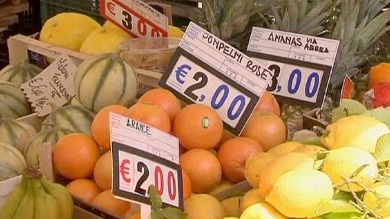
According to Europe's statistics office, Eurostat, the harmonized index of consumer prices (HICP) for July in the euro area held steady at 2.4% in year-on-year terms, the same figure as for May and June. Core inflation, i.e. excluding energy and unprocessed food, increased by 0.1 percentage points to 1.9% year-on-year.
The groups with the greatest positive impact on the percentage change in the HICP have been package holidays, with 13.5% year-on-year growth, hotels (6.6%), air transport (11.3%) and transport fuel (0.5%). The rise in the first groups can be put down mainly to the tourist season. However, in air transport and fuel the main reason was the halt in the moderation of oil prices as from June.
On the other hand, several items in the shopping basket offset these previous groups, thereby avoiding a rise in inflation. Among these, clothing, with a -14.5% year-on-year change, pushed the HICP percentage change down by 0.7 percentage points and footwear (-11.9%) a further 0.2 percentage points. In both cases, the reason was the sales season.
The figures for the euro area's consumer price index hide a certain degree of heterogeneity between the main countries. In Germany and France inflation remains stable around 2% and is expected to continue at this level over the coming months. In Spain, however, and although it is currently at a similar level, inflation will rise significantly over the next few months due to the hike in value added tax announced for September.
Italy, whose inflation rate is already relatively high at 3.6%, might suffer from a further rise although this is still quite uncertain. In Italy the VAT rate has been 21.0% since September last year, when it was raised by one percentage point, and the Italian government has announced another hike of two percentage points for October this year. However, in July it announced a series of cuts in public spending totalling 4.5 billion euros, which would make it possible to delay this rise to 2013.
In any case, over the next few months two large groups will emerge among the countries of the euro area. While the figures recorded in Germany and France will be close to their current rates, Italy and Spain will post higher inflation rates compared with Europe's hard core.
These are some of the reasons given by the European Central Bank to argue that the euro area's inflation will remain below 2% over the coming year. Although the central bank assumes that future risks to price trends are both upward and downward, it stresses the need for fiscal consolidation in some countries and indirect tax hikes pose a risk to its prediction.




